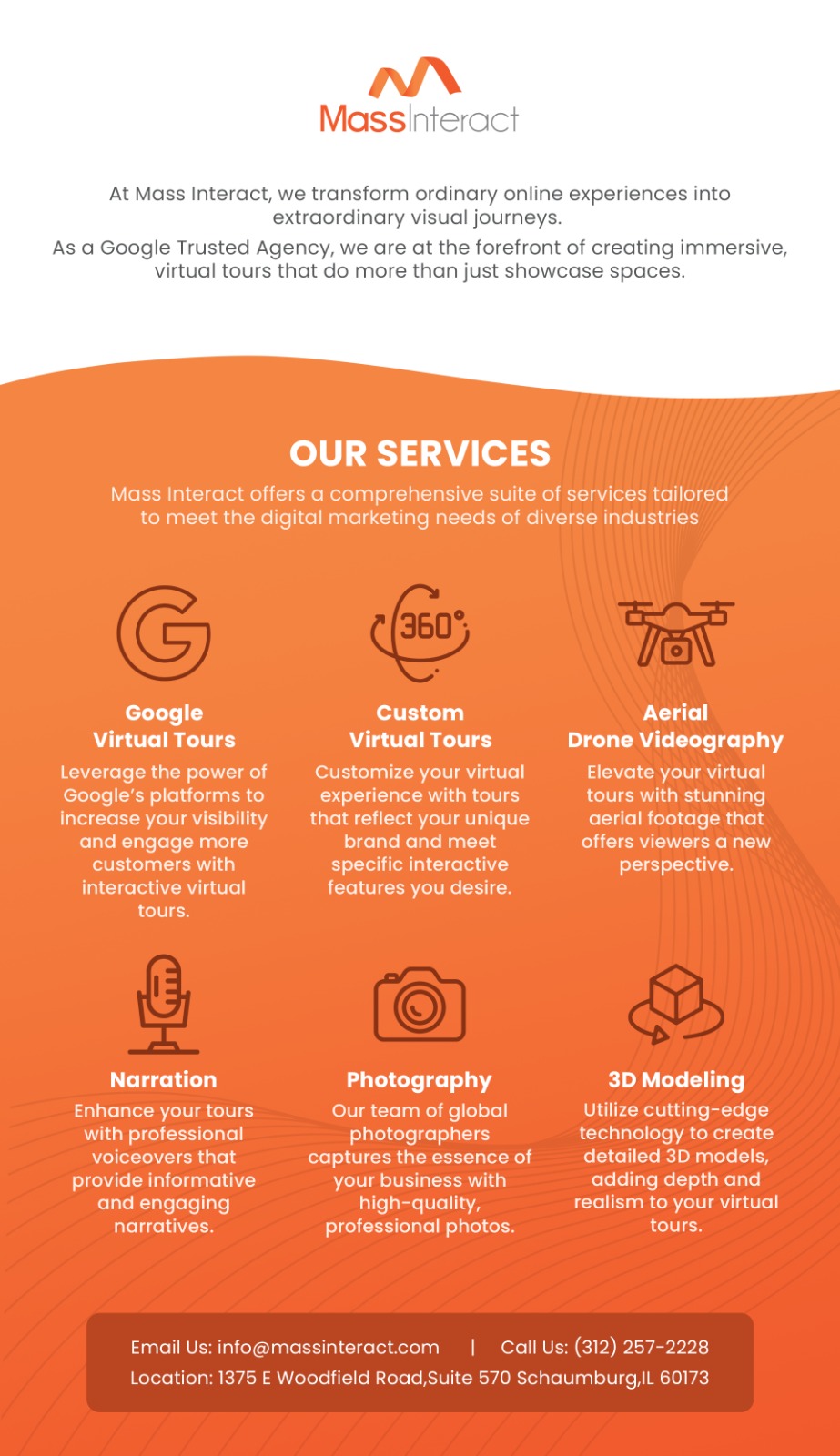
In today’s digital age, offering immersive experiences is more important than ever, especially for industries that rely on visual appeal, such as real estate, education, hospitality, and tourism. A 3D virtual tour is a revolutionary tool that is transforming how people engage with spaces, whether for choosing a home, exploring a campus, or experiencing a hotel before booking. The ability to explore an environment in a realistic, interactive manner from any location is changing the way decisions are made, making the 3D virtual tour an invaluable asset for businesses and consumers alike.
What is a 3D Virtual Tour?
A 3D virtual tour is an interactive digital experience that allows users to explore a space in three dimensions. Unlike traditional 2D photographs or videos, a 3D virtual tour provides a fully immersive experience where users can navigate through rooms, hallways, and outdoor spaces as if they were physically present. This technology uses a combination of high-resolution images, panoramic views, and 3D modelling to create a lifelike environment that users can explore from their computer or mobile device.
Whether you’re buying a new home, booking a hotel, or attending an open day for a university, the 3D virtual tour enables you to inspect spaces with greater detail and clarity, helping you make more informed decisions without needing to travel.
The Benefits of 3D Virtual Tours
The 3D virtual tour offers several advantages over traditional methods of showcasing spaces. For one, it saves time for both the business and the customer. Rather than scheduling multiple in-person visits or relying solely on photos, potential clients can explore the space at their convenience, allowing them to get a feel for the environment before committing to a physical visit.
Moreover, the immersive nature of 3D virtual tours enhances user engagement. Customers can interact with the space, zoom in on specific details, and move from one area to another with ease. This level of interaction helps create a more personal connection to the space, which can lead to higher satisfaction and confidence in decision-making.
For businesses, offering a 3D virtual tour demonstrates a commitment to transparency and innovation. It gives customers a comprehensive and honest view of what to expect, building trust and reducing the chances of miscommunication or disappointment.
How 3D Virtual Tours Are Transforming Real Estate
The real estate industry has been one of the earliest adopters of 3D virtual tours, and it’s easy to see why. A 3D virtual tour allows potential buyers or renters to walk through a property virtually, exploring every room and corner before setting foot inside. This tool is particularly beneficial for long-distance buyers or those with busy schedules who may not be able to attend multiple in-person viewings.
In competitive markets, offering a 3D virtual tour helps properties stand out from the crowd. Buyers appreciate the opportunity to explore homes in detail, whether they’re comparing floor plans, checking out the kitchen, or envisioning how their furniture might fit in the living room. For real estate agents, this technology enhances the efficiency of their operations by providing a 24/7 open house, attracting more potential buyers and reducing the need for repeated viewings.
Enhancing Educational Experiences with 3D Virtual Tours
In education, 3D virtual tours are revolutionising how institutions connect with prospective students. Universities, colleges, and schools can use virtual tours to showcase their campuses, facilities, and accommodations in an engaging, interactive way. This is especially valuable for international or out-of-state students who may not be able to visit the campus in person.
A 3D virtual tour of a campus can guide prospective students through classrooms, libraries, labs, and dormitories, giving them a feel for the environment they may soon call home. It also allows them to explore specific areas of interest, such as athletic facilities or specialised departments, helping them to make informed choices about their education.
Impact on the Hospitality and Tourism Industry
For hotels and resorts, offering a 3D virtual tour can greatly enhance the booking experience. Guests can explore rooms, lobbies, pools, and dining areas, allowing them to see exactly what the hotel offers before making a reservation. This transparency helps to manage expectations and increases guest satisfaction, as they know exactly what to expect upon arrival.
Similarly, the tourism industry benefits from 3D virtual tours by allowing potential visitors to explore landmarks, museums, and other attractions from their own homes. This can encourage travel and help individuals plan their trips with more clarity and confidence.
The Future of 3D Virtual Tours
As technology advances, the possibilities for 3D virtual tours will only expand. Integrating virtual reality (VR) and augmented reality (AR) with 3D virtual tours will create even more immersive experiences, allowing users to interact with environments in new and exciting ways. From walking through an ancient historical site to inspecting the latest commercial real estate property, the potential for 3D virtual tours to transform industries is limitless.
Conclusion
The 3D virtual tour is a game-changer for industries across the board, offering an immersive, interactive, and convenient way to explore spaces. Whether you’re buying a home, choosing a university, or booking a hotel, a 3D virtual tour provides an unparalleled level of detail and engagement, helping you make informed decisions with confidence. As this technology continues to evolve, it’s clear that 3D virtual tours will play an increasingly important role in shaping how we experience the world around us.







